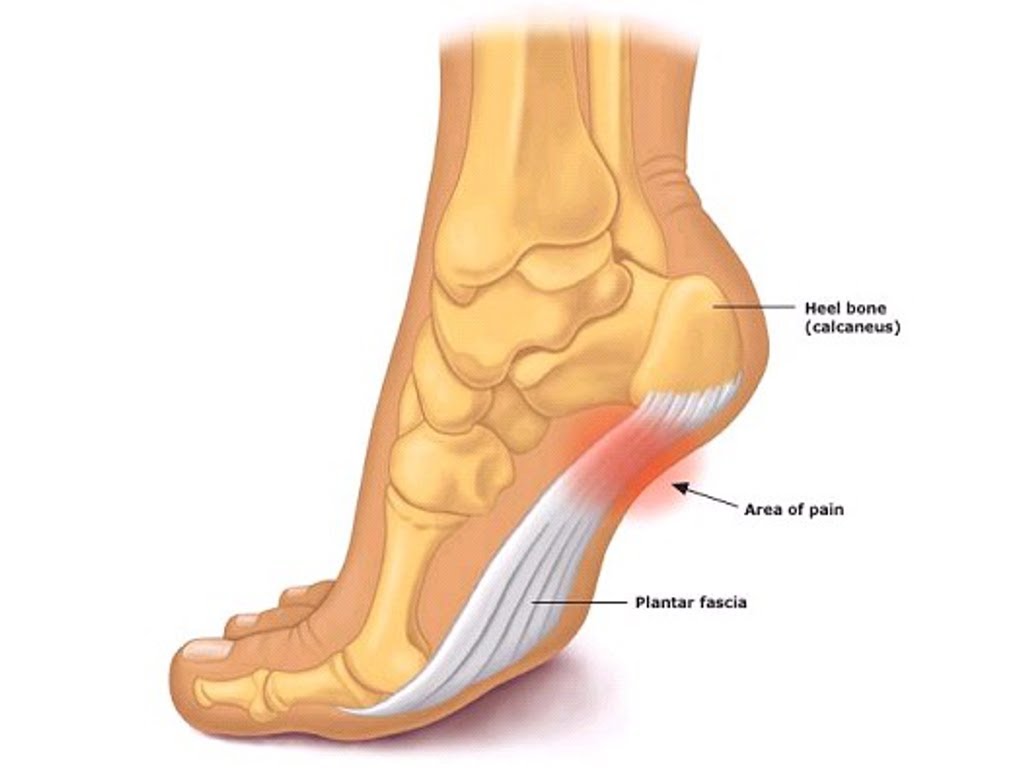Expert Foot & Ankle Treatment from Michigan’s #1 Podiatrist - Balance Foot & Ankle Specialist
Pain in Foot Arch and Heel
Causes & Best Home Treatment
Relieve Foot & Ankle Pain—Right from Home.
Pain in Foot Arch and Heel: This is almost always due to plantar fasciitis. Which is one of the most common foot problems in the world. Follow our 4 video aided treatment guide!
Pain in Foot Arch and Heel
This pain is called plantar fasciitis; and it is the result of overworked ligaments under your foot.
What is Happening?
- Your foot develops microscopic scar tissue due to constant strain.
- These ligaments are constantly inflamed and swollen.
- They do not have an opportunity to heal, and are especially painful in the morning.
- Once you get moving and the blood flushes out harmful immune cells, you feel better after 30 minutes.
- Massaging the arch can make it feel better by increasing blood flow.
Follow our Four Stage Treatment Guide To Accomplish These Goals:
Our goal is to make relieving this pain as as easy both financially and time-wise as possible. We will do this by trying the easiest and most successfully proven medical techniques first and then transition you all the way through to the end.
- Diagnose the exact reason for you heel pain.
- Apply home treatment.
- Apply extended treatment if home treatment did not work.
- Surgical options- don’t worry, this will be 1/20 of people!
Start our 4 Stage Treatment Plan!
The Stages
1. Stage 1 – Make Sure – 100% of People

The goal of this page is to make sure that what you really have is plantar fasciitis.
- There is nothing worse than spending $$$ and time treating the wrong problems!
- So MAKE SURE!
Heel Pain Differential Diagnosis Guide
Differentiate causes due to biomechanics, nerve problems, arthritis problems, traumatic problems, stress fractures, loss of fat pad atrophy. These are less common causes, but just make sure.
Now that you have confirmed that you have inflammation of the plantar fascia due to biomechanical causes => Follow this treatment guide for 3-6 months or until the pain is gone.
Remember if your pain has been there for months or years then you will probably need all of the 6 months or more. The general rule is that the longer you have had the pain => the longer you will need to try conservative treatment!
A. Decrease The Inflammation
B. Keep The Inflammation Away
3. Stage 3- Extended Treatment – 30% of People

A. If there is noticeable improvement keep following the treatment outlined in stage 2.
B. If there is little to no improvement then follow up with this treatment protocol.
- Night splints- a device which helps stretch your tissue while you sleep
- A corticosteroid injection to decrease inflammation
- Prescription orthotics
- Immobilization in a cast or a CAM walker
Pain on the Inside of the Foot due to Biomechanics
4. Stage 4- Surgical Treatment – 5% of People
At this point if you haven’t already- you will need to visit a podiatrist for further in-depth studies to rule out nerve disorders, inflammatory arthritides, and stress fractures or finally look into surgery.
- Test for nerve compression and Inflammatory Arthritis
- Extra-corporeal Shockwave Therapy
- Surgery
Foot Surgeries for Heel Pain
Other Treatment Reviews
From Heel to Toe: Trusted Treatment Videos
Get the Facts Before You Step into Treatment.
Why Choose Balance Foot & Ankle Specialist in Howell and Bloomfield Hills?
Our experienced podiatric surgeons combine precision, care, and innovation to deliver successful outcomes in flatfoot reconstruction. With modern facilities, patient education, and compassionate care, we’ve become the trusted choice for foot and ankle surgery in Southeast Michigan. We’re committed to restoring your stride—comfortably and confidently.

Pain in Foot Arch or Heel – Frequently Asked Questions
Common causes include plantar fasciitis, flat feet, high arches, heel spurs, tendonitis, or overuse injuries.
It typically causes sharp, stabbing pain in the bottom of the heel or arch, especially with the first steps in the morning or after sitting.
Yes — flat feet can lead to fallen arches and strain on the plantar fascia, resulting in pain in the arch and heel.
A podiatrist will examine your foot, ask about your symptoms, and may use imaging tests such as X-rays or ultrasound to determine the cause.
Rest, ice, stretching exercises, supportive footwear, and over-the-counter anti-inflammatory medication can help reduce pain and swelling.
Custom orthotics can provide better arch support, correct foot mechanics, and significantly reduce pain for many people with chronic arch or heel pain.
Yes — repetitive strain from running, jumping, or high-impact sports can increase the risk of plantar fasciitis and arch-related discomfort.
You should seek professional care if pain persists for more than a week, worsens, or interferes with daily activities, despite rest and home care.
Podiatric treatments may include custom orthotics, physical therapy, shockwave therapy, laser therapy, cortisone injections, or minimally invasive procedures depending on severity.

